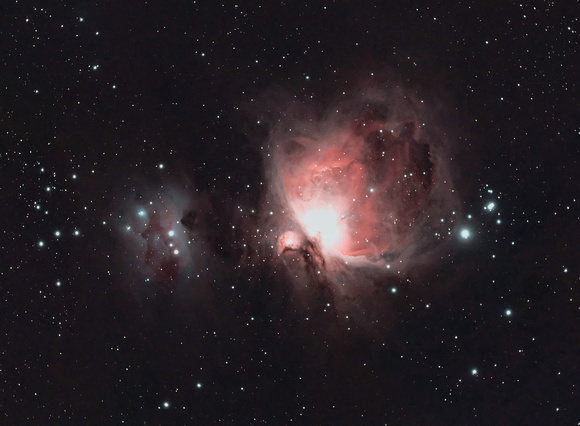Canon 350D Hap Griffin Baader ModONEx360sec at iso 1600
30 Darks/Flats/Bias
Orion ED80 with WO 0.8 reducer/flattenerAstronomik CLS Filter
This image is from only ONE light frame taken in September and processed out of boredom during a 5 week period of no imaging. For one frame, it is astonishing how well it represents the object. Not an exemplary image, but it will do until I can get out and get a proper set of exposures on this magnificent object.
The Great Orion Nebula -
M42, M43, and NGC 1977 (Running Man Nebula) in Orion.
The Nebula is in fact part of a much larger nebula that is known as the
Orion Molecular Cloud Complex. The Orion Molecular Cloud Complex extends throughout the
constellation of Orion and includes
Barnard's Loop, the
Horsehead Nebula,
M43,
M78 and the
Flame Nebula.
The Orion Nebula contains a very young
open cluster, known as the
Trapezium due to the
asterism of its primary four stars. Two of these can be resolved into their component binary systems on nights with good
seeing, giving a total of six stars. The stars of the Trapezium, along with many other stars, are still in their
early years. The Trapezium may be a component of the much-larger
Orion Nebula Cluster, an association of about 2,000 stars within a diameter of 20 light years. Two million years ago this cluster may have been the home of the
runaway stars AE Aurigae,
53 Arietis, and
Mu Columbae, which are currently moving away from the nebula at velocities greater than 100 km/s.
September 18, 2007


